Peter MALONE
Solecitudo do Ceu/ Silence of the Sky/ Era il Cielo
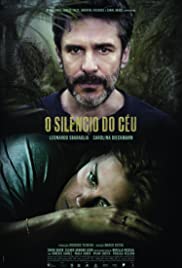
SOLECITUDO DO CEU/ THE SILENCE OF THE SKY/ ERA IL CIELO
Brazil, 2016, 102 minutes, Colour.
Leonardo Sbaraglia, Anna Carolina Dieckmann, Chino Darin, Alvaro Armand Ugon, Mirella Pascual.
Directed by Marco Dutra.
This is a very strong drama about a marriage, broken relationships, phobias. And it begins, most confrontingly, with a rape sequence. The first 10 minutes are from the perspective of the wife who has been raped. The next 10 minutes are a recap repetition of the episode but from her husband’s point of view.
The wife, Diana, remains calm and does not communicate anything of what happened to her husband. They have been together for some time, experienced a separation and have come together again, especially the two young children. The husband explains with a voice-over that he suffers from a great number of phobias.
While the wife continues with her business, dress design, communicating with her friend and looking after the children, the husband, Mario, begins to follow clues, discovers one of the rapists, working at his mother’s garden business, a beautiful and quite extended hothouse with myriad flowers and shrubs. By chance, he discovers who the other rapist is, two brothers. One, working in an advertising agency, has had an affair with Diana.
The film builds up to a climax with Mario poisoning one of the brothers and then confronting the other in his house, his violence bursting out, Diana, having discovered and followed Mario, witnessing what happened.
The end of the film leaves all to the audience to work out what will happen between the two – which will depend on how they have responded to each throughout the film.
Mario is played by celebrated Argentinian actor, Leonardo Sbaraglia. Diana is played by the Brazilian actress, Carolina Dieckmann.
1. Brazilian production? Uruguayan locations? Brazilian and Argentinian cast?
2. The Uruguayan city? Homes and suburbs, streets? The extensive garden business? Offices? Suburban atmosphere? The musical score?
3. The range of titles?
4. The opening, the confronting rape sequence, Diana’s experience, the rapists and their behaviour? Her reaction? The aftermath? Her dress in the bag? In the laundry? Later found by Mario? Her phone call, saying everything was normal? Asking him to collect the children, their tennis game? Arriving home, playful, the moving cactus, the meal, watching skiing on television? Their normality compared with Diana’s experience?
5. The repeat of the episode from Mario’s point of view, coming home, seeing what was happening, part inability to move, pursuing the rapists, the escape? The phone call, collecting the children, tennis, the children and their going to bed?
6. The background of the relationship, together, the children, Diana and her wanting Mario to move out, his moving out, two years and more, the return? Things seeming normal?
7. Mario, his voice-over, his explanation about phobias, the range of phobias, their effect on him, since being a child? Diana and her knowing these, even listing them? His phobias and the impotence at the time of the rape? His being bent on revenge?
8. His work with Trini, writing the television, his creating personalities in comparison with his own?
9. The car, following it, the discovery of the garden business, watching Nestor? Examining plants, buying the cactus, the dealings with Malena? Diana and her design business, the cactus images, her reaction against them? Mario and his catching the cactus during the rape sequence, his hands?
10. Diana, her reticence, unable to and unwilling to talk to her husband? His knowing and not able to draw a response from her?
11. Julian playing with the phone, the image of Andres, his explanation to his father?
12. Mario returning to the business, examining plants, the advice of the mother, his conversations, the information about her son?
13. Mario getting a gun from Trini? Not going to write with him? His following the two men? At the business, the story about the poisons, his putting it in Nestor’s flask, following, Nestor’s collapse, hospital? Going to confront Andres, the advertising agency, the affair with Diana? His following Nestor and seeing him pause outside Diana’s business, to confront her, the car and his driving off?
14. Diana, her concern, the children with their grandparents, Trini and the explanation of the gun? Diana seeing her husband, following him, going into the house, Mario and his confrontation with countries, the violence and his bashing him? Diana, getting the gun, the implement of killing?
15. Diana and Mario, the effect of the experience, some kind of understanding? Future?
Unnatural Causes
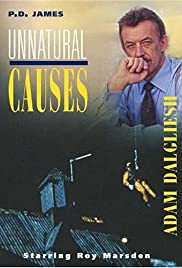
UNNATURAL CAUSES
UK, 1993, 103 minutes, Colour.
Roy Marsden, Simon Chandler, Kenneth Coley, Mel Martin, Bill Nighy, James Cossins, Nicholas Jones, Anne Lambton, Marjie Lawrence, Richard Alborough, Lucy Briers.
Directed by John Davies.
Unnatural Courses is a standalone contribution to the television series of dramatising PD James novels with Adam Dalgleish as the hero. The film presupposes Dalgleish’s background, his work as a poet, his skills and reputation as a detective, staunch and upright. He is played in all the episodes by Roy Marsden.
In this film, Dalgleish has a love interest, an editor with a publishing firm, played by Mel Martin. This film shows the relationship, the tensions, the pressures on each because of their job, Debra having to make a decision whether she will move to New York or not.
The initial setting is London club which is involved in money laundering. Then there is a murder, an author found dead in a boat, his hands chopped off. He was not generally liked. The film then introduces the range of his friends, their relationship with him, dislikes, and the issue of his will, the news that he was to make a foundation for a literary award, his relationship with his stepbrother.
There is a literary clique in the village, several authors who value their reputations. Interestingly, among these characters is an earlier performance by Bill Nye.
The film spends time on the delineation of characters, then focusing on the half brother, the condition of his inheriting his brother’s money if he married.
Finally, most of the attention goes to the authors longtime secretary, crippled by an accident for which he took the blame, the suicide of his wife, the secretary years of devotion to him.
When the half brother is also murdered, suspicions were narrowed, the police closing – but, there is a highly melodramatic ending (which must’ve cost the budget quite a deal with its elaborate storm, helicopter rescue, destruction of a house).
Some PD James fans felt that it was not faithful to the novel – but television audiences may well enjoy it with its many complexities.
1. The popularity of the detective novels of P.D..James? The investigations by Adam Dalgleish? The television series? Standalone television movies? The place of this film?
2. Audience familiarity with Dalgleish, his personality, strong, tall, dignified, Scotland Yard, Commander, his life, marriage, as a poet? This story and his involvement with Deborah Briscoe?
3. The club setting, the manager, his assistants, Maurice Seton and his presence, photographing, his being ousted? Digby Seton and his connection, working at the club, being fired? The manager and his international clients? The suspicions of money laundering?
4. Maurice Seton, seen at Kings cross station, found dead in the boat, his hands chopped off? His lack of popularity, even among friends? His work as an author, his research? The background of his marriage, his wife’s suicide, the devotion of Sylvia, his secretary? His money, his will?
5. Dalgleish called in, his assistant, the local police, his collaboration with Inspector Gerry Reckless? Local knowledge, the village, the sea, the range of houses? The weather, storms, rising tides? The musical score?
6. The range of suspects, the literary clique? Celia, her snobbery, her writing, attitude towards Maurice? Her careful is? Liz, the relationship with Digby, possible marriage? Justin Bryce, author, gay? Oliver, prissy, gambling, in need of money? The various meetings, the meals, the discussions, throwing light on Maurice?
7. Sylvia, the history of the accident, her injuries, taking the blame? Her continued devotion to Maurice?
8. Deborah, the publishers, the information about Maurice Seton providing an endowment? Sylvia not knowing?
9. Deborah and Dalgleish, the time together, love, her career, his career and timing, the tensions, Deborah is flat and the invasion? The ultimatum? Deborah going to New York? The final message? The effect on Dalgleish?
10. The further complications, Debbie Digby to marry if he was to inherit? The revelation that he had married Sylvia? His unreliability, his drinking, connections with the money laundering? His killing Maurice? The grotesque aspect of the cutting of the hands, the views of the coroner, motivation?
11. Digby, discovered dead, the poisoning?
12. Oliver, his visits, knocked unconscious? Under suspicion? His jealousy of Justin Bryce?
13. Dalgleish, Reckless, their working on the investigation, the various clues, pointed to Digby, pointing to Sylvia?
14. The gathering storm, the rising tide, Sylvia in the house, Dalgleish going to her, the confrontation, her confession, the rescue and the helicopter, her diving into the water?
15. The complexities of the murder mystery, the further murders, the money laundering, the detective work?
Caravan

CARAVAN
UK, 1946, 117 minutes, Black-and-white.
Stewart Granger, Jean Kent, Anne Crawford, Dennis Price, Robert all Helpmann, Gerard Heinz, David Horne.
Directed by Arthur Crabtree.
Dastardly might be a word that comes to mind while watching Caravan. Later bloggers on the IMDb refer to it as “a hoot�.
Perhaps to do adjusters it should be seen in the context of British filmmaking at the end of World War II. At Gainsborough’s Studios, there was a move to make high melodramas, many with period setting. There was The Man in Grey (by a novel from the author of Caravan, Lady Elinore Smith, and the credit is referring to “the famous novel�), The Wicked Lady, Fanny by Gaslight, Madonna of the Seven Moons (with Stewart Granger and Jean Kent in the cast).
These films were costume melodramas, highly melodramatic, sometimes over the top. However, they were very popular with the British filmgoing public in the mid 1940s, highly imaginative stories which took them out of the war experience, the post-war experience, rebuilding, rationing…
Caravan has British and Spanish settings. At the centre is Richard Daryl, played with his usual dapper style by Stewart Granger, venturing into some swashbuckling’s which would serve him well when he went to Hollywood, skirmish, Prisoner of Zenda. He rescues a Spanish count from thugs in London, recounts his story, gets the patronage of the car to publishers his novel and sent him on a mission to return a necklace to Granada.
In the flashbacks, there are stories of Richard and his encounters with the more aristocratic Oriana and the third member of their group, the foppish Francis. Oriana and Richard intend to be married but he goes to London to make money so that he can support Oriana. In the meantime, the dastardly Francis, a fiendish fop played by Dennis Price,.’s out, wants to marry Oriana, gets his manservant, an opportunity to see Robert Altman playing a 19th-century hitman!, Accompanying Richard on his journey to Spain, trying to kill him, but setting up an ambush and achieving it on the final road to Granada.
In the meantime, a Gypsy dancer, Jean Kent being exotic, is attracted to him, tries to fall of the plot, rescued Richard when his left for dead, reviving him but his having lost his memory. Gradually, there is a love relationship but, unfortunately for her, she mentions the name Oriana which jogs Richard memory, sets him to return to Oriana but region of her marriage to Francis, because she had heard that Richard had died and was being pressurised by Frances.
All the ingredients for a melodramatic end, the count and Oriana travelling to Granada, Baal and her giving her life for Richard, his anger, his seeing the truth, and a final confrontation with France’s who disappears into quicksand.
The film was directed by cinematographer, Arthur Crabtree, who moved into directing with Madonna of the Seven moons and a number of smaller budget dramas.
The 21st-century audience, an entertaining high melodrama or, perhaps, something of a hoot.
Mind to Murder, A
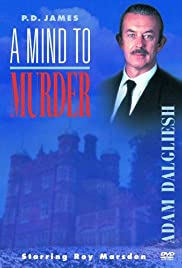
A MIND TO MURDER
UK, 1995, 101 minutes, Colour.
Roy Marsden, Robert Pugh, Frank Finlay, Jerome Flynn, Christopher Ravenscroft, Sian Thomas, Ann- Gisel Glass, Cal Mac Aninch Susannah Corbett, George Costigan.
Directed by Gareth Davies.
During the 80s and 90s, there were several films but, more especially, a television series dramatising a number of the novels by P.D.James featuring her detective, Cmdr Adam Dalgleish. He was played in the series and in the films by Roy Marsden, embodying a very upright Scotland Yard detective, very serious, conscientious in his work, collaborating with his associates, and, also a poet.
This is one of the later films. It begins with a police disaster, the death of one of Dalgleish’s associates, and the involvement of a government office. However, the main action takes place in a mental institution, a refuge for rich patients, addicts or those with mental problems. It is run by a Prof, Frank Finlay. A woman is found murdered in the basement, stabbed, but a fetish carved by one of the patients lying on her body.
All the staff are interviewed – many of them with their own stories, relationships, confidentiality about patients, and the dead woman generally disliked. The staff include several of the psychiatric staff, receptionist, nurses, maintenance man.
The audience is also introduced to a number of the patients, some tensions in group work, the focus on the disturbed man who carved the fetish and his attachment to an opera singer who has had a mental collapse.
There are various possibilities – and even a visit from government officials who want to cover up about the previous killing and any link with the institution.
However, it emerges that the crime has nothing to do with the running of the institution but rather the blackmailing of patients who do not want their situation made public.
An effective British thriller, with well-respected Scotland Yard operatives, all working by rules of the book.
1. The popularity of the crime thrillers by P.D.James? Audiences liking Adam Dalgleish, his personality, his investigations?
2. Roy Marsden as Dalgleish, screen presence, age, height, demeanour, gentlemen, commander, Scotland Yard, his work in collaboration with staff? His abilities, clues, solutions?
3. The opening, Dalgleish, his associate going into the building, the discovery of the bodies, her death? The involvement of the government? Cover-ups?
4. Dalgleish on leave, ordered back, going to the psychiatric Centre? The encounter with the professor, his management of the Institute, confidentiality, staff, collaboration with Dalgleish, the passage to the sea? His work with his staff?
5. The murder victim, the basement, the office, the files, the fetish, Frank, lying on her? Her being stabbed? The gradual information about her as a person, disliked, her personality, relationship to sister Ambrose and her mother, financial support, her changing her mind? Motivation for murder?
6. Dalgleish, the range of staff, John is still loyal support, his investigations? Kim and her arrival, the interviews, alibis? Their skill in work?
7. The interviews with the staff, audience suspicions? Sister Ambrose, her work, care of the patients, her lying about the financial support? Dr Saxon, confidentiality, her patients? Dr Baguley, her relation ship with him, their history, exposure, the dead woman at the theatre, the doctor going back to his wife? Jennifer, reception, finding the body? Peter, maintenance, his being a painter, his boat, friendly with Dalgleish, showing him around, his relationship with Jennifer?
8. The focus on Philip, his carving the fetish, his mental illness, mind absence, unsure, his relationship with a still, her singing, her breakdown, his helping her to rehearse and to recover? The strength of the relationship? His anxiety, going onto the roof, Peter urging him about a style, his falling to his death? The consequences for a style, blaming Dalgleish?
9. The government interference, the visit to the institution, the presence of Casey, of Cheeseman? The previous case and the breakdown, Casey and his presence? The arrangements for a cover-up and the blaming of Philip for the death?
10. The surprise that the motivation for the death had nothing to do with the government, all with the staff? The discovery of the accounts, the blackmail, the phone call from the widow and her information, Jennifer and her role with the banking, Peter and his collecting the mail, getting the information, his arranging the blackmailing?
11. The situation, Peter discovered, the murder, Philip’s arrival, Peter persuading them that are still was to blame, his calling out to Philip on the roof, responsible for his killing himself?
12. Jennifer, the interrogation, her eventually confessing, a love for Peter, his trying to make his escape, Dalgleish and his pursuit, to the quicksand, Peter and his sinking, Dalgleish getting the rope, the lifeboat, pulling him to safety? In the film ending with this scene leaving the audience to reflect on what it happened?
Mystery of DB Cooper, The

THE MYSTERY Of DB COOPER
US, 2020, 85 minutes, Colour.
Directed by John Dower.
Most of us enjoy crime investigation – just looking at the range of channels on Foxtel reminds us that we all seem to be sleuths at heart, enjoy the police procedural investigations, have our favourite detectives, or are fans of investigations of real-life crime.
In the 1970s and 1980s, the crimes of DB Cooper were popular and mysterious. There was a feature film in 1981 featuring Robert Duvall and Treat Williams. But, the point was, that nobody knew who DB Cooper really was. Actually, that’s not quite exact. There were various theories as to who Cooper was, the FBI pursuing them, some of the claims very persuasive, others excluded for contradictory evidence. Even some of the money was found by the Columbia River in 1980, raising even more questions. But, eventually, the FBI closed the case. No identification of DB Cooper.
This documentary reminds audiences of the audacious crime that took place almost half a century ago. A seemingly ordinary citizen boarded a flight in the Northwest US, made contact with one of the flight attendants (who was interviewed for this film as well as one of the pilots). He seemed polite but made a demand for $200,000. The plane landed, the money was supplied, it took off again – and with surprising audacity, the man, giving the name DB Cooper, parachuted out over the Northwestern forests.
Writer-director, John Dower, takes up the investigations, interviewing various people who had made claims that they knew who DB Cooper actually was. John Dower has a strong reputation for making 17 documentaries over two decades. He certainly involves his audiences here, listing a number of potential candidates, tracking down contacts and relatives, also making contact with the author of a book about Cooper and the hijacking and his disappearance.
The number that John Dower chooses to explore is five. Those who enjoy research might find it interesting to check with the Wikipedia entry on Cooper – with 13 possibilities, including the five from this film, listed with details of the investigation, arguments for and against.
We are introduced to a number of people who are very strong in their claims. One claimant, the widow of Duane Weber, is certain that her husband, who had served time, made a deathbed confession. The probability of a man who did a copycat hijacking and robbery, Ronald Floyd McCoy? Jr, is enhanced by his resemblance to the witness sketch. McCoy? was caught soon after the Denver hijacking but escaped from prison. The name, Cooper, was an advantage in the suggestion that the criminal was Lynn Doyle Cooper, his niece giving testimony about him, his past and plans to do similar kinds of escapades.
The most surprising of the five nominees in this film is Barbara Dayton, born Robert Dayton, recreational pilot, merchant Marine an army service, post-war working with explosives.
The director uses a deal of archival footage to help with the dramatics of the incident, footage of the forest terrain, footage of some of the suspects from the period. Because of the situation and the claims, the talking heads included throughout keep audience interest. And there are some re-creation of characters and situations.
Of course, the word mystery is in the title – and so, the emphasis is on investigation because there has been no solution.
Arctic Justice/ Arctic Dogs
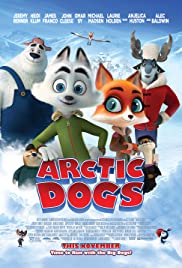
ARCTIC JUSTICE/ARCTIC DOGS
US, 2019, 92 minutes, Colour.
Voices of: Jeremy Renner, Heidi Klum, James Franco, John Cleese, Omar Sy, Michael Madsen, Laurie Holden, Anjelica Houston, Alec Baldwin.
Directed by Aaron Woodley.
Originally Arctic Justice but changed to the friendlier title, Arctic Dogs, this is a pleasant, if slight animated comedy adventure. With the delivery of the post in snowclad terrain, it evokes some memories of Jack London’s Call of the Wild.
The excited hero of the piece, Shifty, voiced by Jeremy Renner) is an Arctic Fox, who idealises the dogs who draw the sled and deliver the mail. To be like this is is one ambition. But, he is considered too small and slight.
But he does have a whole range of friends, of all shapes and sizes, a variety of animals – with the opportunity for various movie celebrities to provide character voices. He is attracted to another Fox, voiced by Heidi Klum. She is inventive and creative, rather an Arctic brainwave. She is employed by a mysterious wheelchair-bound walrus with an English accent – in fact, John Cleese. He lives in a remote mansion, is up to no good.
When the dogs give up on the mail route, Shifty makes a plea to take their place. It is quite an effort pulling the sled but he manages successfully. However, when he tries to tell his friends about the dangerous walrus, they consider him as the Fox who cried Wolf and don’t believe him.
Needless to say, Shifty does persuade them, goes to the rescue of Jade, confronts the walrus and there is the expected happy ending.
It is animated film designed for younger audiences, perhaps more suitable to the very young – the parents might find it too slight but could be amused by the range and shapes of the characters and the celebrity voices.
Rhythm Section, The

THE RHYTHM SECTION
UK/US, 2020, 109 minutes, Colour.
Blake Lively, Jude Law, Sterling K.Brown, Richard Brake, Raza Jaffrey, Geoff Bell.
Directed by Reed Marano.
The Rhythm Section is a contemporary espionage story, a film about an agent with a license to kill. Of particular interest is the fact that the film was produced by the 007 team, Michael Wilson and Barbara broccoli. Was a series intended?
Blake Lively plays a young woman, Stephanie, from an affectionate family, who changed her plans for travel, her parents and brother and sister all being killed in a plane crash – and the information that a bomb was aboard. (Parallels with the plane of Malaysian airlines shot down over the Ukrainian in 2014.)
Stephanie is seen at the opening, a gun, threatening a victim in Tangier – and the action going back eight months, seeing her drug-adult, in prostitution in London. She is approached by an agent for recruiting, his having investigated her link to the crash at her parents. He is killed and she travels to Scotland to encounter retired agent, tough and merciless, played by Jude Law. He challenges her, trains her, then send her out on mission.
It is somewhat surprising to find that she is ready for 007-style mission after eight months of training. She has various disguises, weeks, and eventually takes on the persona of a dead agent. She has various commissions, is partially successful, find she cannot go through with ultimate kills. She goes to Spain, there are car chases, she goes to Marseille to confront one of the chief suspects, she takes on a mission in New York but again is unable to go through with it.
She is connected with an ambiguous agent in Spain, played by Sterling K Brown, who gives her various commissions – but she discovers the truth about him for a final challenge.
Was directed by cinematographer/director, Reed Marano, who won awards for her work on The Handmaid’s Tale.
Perhaps the producible hoping for a series. However, The Rhythm Section was not so popular at the box office and the question could be raised as to whether Blake Lively could sustain a franchise along the lines of 007.
1. Espionage film? Agents, license to kill? World terrorism? Bombs on planes? Intelligence agencies investigations, hits?
2. The range of settings, worldwide? The UK, Spain, Tangier, New York? The musical score?
3. The title, Boyd’s explanation? Interior harmony, heart and breathing, parallels to the orchestra?
4. The opening, Tangier, the woman with the gun, going back eight months?
5. Stephanie, her place in the home, the font relationship with her parents, brother and sister, the photos? Recurring for her memory?
6. Stephanie, in London, drugs, prostitution, destitute? The visit from Proctor? Recruiting her? Her going to visit him? His explanations? The walls and photos, agencies and investigations? Responsibility for the bomb and placing it? Stephanie in the University cafe, gazing at the man, her bag disappearing, her return to Proctor’s apartment, his death? The information in the code?
7. Her travelling to Scotland, the encounter with Boyd? His background, agencies, espionage? His confronting her? Training her? The challenges, the running and exercise, the rhythm section, challenge to swim in icy water, the physical fights, shooting practice? Sending her out on mission?
8. After eight months, Stephanie and the training, her abilities, limitations? Her disguises, her weeks, and make up? The tracking down of information about those responsible?
9. The visit to Spain, the contact with Sarah, his background, presence in Spain, business deals? The setting up of leads, Stephanie and the confrontation, the fight, the car Chase and the dangers? Her going to New York, setting herself up, the target and his background, the sexual encounter, her inability to kill him? His leaving the early apartment, in the car, the explosion, his children in the car? Boyd saying he had to live with this?
10. The visit to Marseille, the confrontation with the terrorists, the argument, the fight, his death?
11. The return to Spain, the indications of the sexual relationship between Stephanie and Sarah, his role in the bomb placement, her embracing him, injecting him, his death?
12. The return to England, the encounter with Boyd, her saying she could not continue with the killings? Her future?
Da Sweet Blood of Jesus
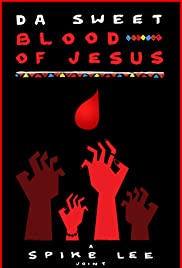
DA SWEET BLOOD OF JESUS
US, 2014, 123 minutes, Colour.
Stephen Tyrone Williams, Zara Abrahams, Rami Malek, Elvis Nolasco, Thomas Jefferson Byrd.
Directed by Spike Lee.
it is difficult to place Spike Lee’s Da Sweet Blood of Jesus (2013) and its focus on Jesus and his death, the shedding his blood, Eucharist and the sharing of his blood. Surprisingly, it seems to have no connection with the 1941 The Blood of Jesus, directed by Spencer Williams an African- American story, quite explicit in its religious themes. Spike Lee’s film is a remake of a horror film, Ganja and Hess (1973, director, Bill Gunn) and incorporates much of Gunn’s original screenplay of the though Gunn had died.
Interestingly, of the reviews that can be found online, practically none of them refer to Jesus, the Gospels or the religious themes. One reviewer remarks that there are religious elements but that they never coalesce into anything compelling (Larson on film). Respected reviewer A.O. Scott of the New York Times, writing of the vampire themes, refers to the subtext of certain new Testament versus that the church pastor, seen at the beginning and the end, seems especially interested in.
What Lee seems to be doing is to use these new Testament texts, made explicit with enthusiastic quoting and repetitions by the pastor, as what T.S. Elliot might have called an “objective correlative�, a metaphorical source of reference for a theme. In this case, it is a vampire theme, acknowledging some Christian traditions from Dracula but actually more interested in African traditions, the use of blood, the consumption of blood with further cravings, that have been transported to the United States through the slaves. The central character is Dr Hess Greene (Stephen Tyrone Willliams), an academic, upper-crust, with a mansion on Martha’s Vineyard, a collector of anthropological items, including a large knife. He is killed by an associate with the knife and turns into a vampire, the film showing him preying on women for blood, meanwhile keeping up his academic commitments, encountering the widow of the man who stabbed him and transforming her.
Eventually, after his vampiric experiences, he grows tired, going back to the church, reminded of the themes of the blood of Jesus, dying under the shadow of the cross.
To that extent, the film is a variation on familiar vampire themes. But, with the title and the gospel texts, Da Sweet Blood of Jesus finds its place in films, Jesus on screen.
1. The title? The African- American phrasing? The reference to the Gospels? The religious ritual, the homily about the Sweet Blood of Jesus? The blood as a symbol?
2. The remake of a horror film, vampire overtones? The use of the original screenplay? With Spike Lee’s perceptions?
3. New York settings, shops? Martha’s Vineyard, the surroundings, the mansion, the sea, the musical score?
4. The church sequence, the Evangelical enthusiasm, the Bishop, his singing, dancing, his homily, the Gospels, the Blood of Jesus? The congregation, men and women, the music? Hess Greene, the back of the church? And his returning there at the end?
5. The sermon, the theology, the Blood of Jesus, sacrifice, redemption?
6. The Christian tradition, the African- American traditions? Adaptation? Blood, the drink for life? The link with the vampire, needing others blood to live? The vampire themes, destruction, new life, continuation of life? The impact for the audiences and the use of the blood imagery?
7. Dr Green, in New York, his associate and admiration, buying the knife the story of the traditions? Going to Martha’s Vineyard, their discussions, the associate and the rope to hang himself, in the bath, stabbing the professor, his reviving, the death of the associate, his body in the freezer? The professor and his continuing on life?
8. His academic career, trips, wealth, limousines… Living in style?
9. The city, the encounter with the prostitute, the discussions, draining her blood? The encounter with the mother and child in the park? Is destroying her?
10. The arrival of the wife of his associate, from England, her presence in style, attitude towards her husband? The demands? Her being welcomed? The attraction between the two? The intimacy of the sexual relationship? The mystery of the professor’s life? Anthropology, the knives, the souvenirs and trophies?
11. The professor taking her blood, the effect on her, gradually accepting it? Their life together?
12. The friend from the past, her arrival, the attraction with the wife, their sexual encounter, her being killed and her blood drained?
13. The effect on the Professor, dealing with his wife, the effect of the blood, the consequences?
14. His change of heart, going to the church, his wanting to repent, to die – and his death, in the shadow of the cross?
15. The wife, the reviving of the friend, the end and their standing on the beach?
16. The film as symbolic? For African- American audiences? The world audiences?
Hound of the Baskervilles, The. 1972
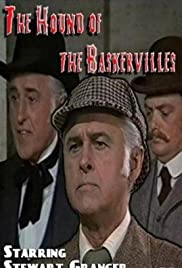
THE HOUND OF THE BASKERVILLES
US, 1972, 74 minutes, Colour.
Stewart Granger, Bernard Fox, William Shatner, Anthony Zerbe, Sally Ann Howes, Jane Merrow, Kenny Ireland, John Williams, Alan Caillou, Brendan Dillon, Arlene Anderson, Liam Dunn.
Directed by Barry Crane.
This is a small-budget version of the famous Conan Doyle story, filmed many times, with excellent Holmes like Basil Rathbone, Peter Cushing, Ian Richardson. Stewart Granger is pleasantly gentlemanly as Holmes. Bernard Fox is very similar to Nigel Bruce. There is a range of American and British character actors in guest roles. Especially Anthony Zerbe as Dr Mortimer and William Shatner as Stapleton.
There is a flashback history to the curse of the Baskervilles and portraits of the ancestors in the home. The basic ingredients of Conan Doyle story our present, but abbreviated, and, for those not familiar with the story, entertaining in their way. Direction is by Barry Crane, his first television film before a prolific television career.
Critics were not very favourable to this version.
1. Small budget television movie of the week version? In comparison with other versions?
2. London, 1889, streets, buildings, carriages, costumes and decor? The Baker Street office? Devon, the mansion, the Moors? The musical score?
3. Stewart Granger as Holmes? Older, dapper, the English gentleman? Bernard Fox as Dr Watson, in the Nigel Bruce tradition? Watson testing his detective capacities, always wrong? The walking stick, the analysis, going to the talk, the encounter with Dr Mortimer, the explanation of the situation, meetings Sir Henry from Canada? The discussions, the warnings and messages? The coach following Sir Henry? Holmes and Watson losing it? The humour that the pursuer identified the cab driver as Sherlock Holmes? Further messages?
4. The flashbacks, the hunt, Sir Hugo, rake and rogue, the abduction, his behaviour, the hound and its destruction? The legend of the curse? Sir Charles and his being killed on the moor? The paintings in the house – and Stapleton altering Sir Hugo?
5. The train trip, the house, Barrymore and his wife, the story of the three escapees, in the quicksand, shot, in the river? Selden surviving the river, nephew of Barrymore’s wife, the signals, the food? His death – wearing Sir Henry’s clothes?
6. The town, the clue of the paper, Laura, dictation from her father, their alienation, his liking civil suits, her going to visit Stapleton, the story of her divorce, the initials on the paper for Sir Charles, Dr Mortimer giving her the money?
7. Stapleton, his background, teacher, his wife? His suave manner? His wife passing as his sister? The meetings with Sir Henry, with Holmes? Sir Henry attracted to the sister?
8. Holmes, back to London, in fact in disguise, lurking on the Moors, getting information, the revelation of his disguise to Watson?
9. The suspicions on Stapleton, removing the alterations to the portrait? The truth about his being a Baskerville? His wife as his sister? He is using Laura?
10. The setup, the final meeting on the Moors, the hound, its pursuit of Sir Henry, the scent on his missing boot? The shots? The hound returning to base, turning on Stapleton, in
the quicksand?
11. The basics of Conan Doyle’s story?
Menendez, El Dia del Senor, Parte 1/ The Day of the Lord, Part 1
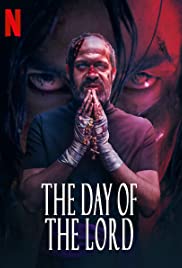
MENENDEZ, EL DIA DEL SENOR, PARTE 1/ MENENDEZ: THE DAY OF THE LORD, PART 1.
Spain, 2020, 93 minutes, Colour.
Juli Fabregas, Hector Illanes, Delores Heredia, Ximena Romo.
Directed by Santiago Alvarado.
Since the 1970s, especially with The Exorcist and its sequels, there have been many films, variation on William Friedkin's film, variations, parodies, explorations of horror and demonic possession.
This film is more modest. It takes place over three days, culminating on Sunday, the day of the Lord.
The film begins provocatively, a tantalising sexual dream and the priest, Menendez, waking in dread. In his dreams, there is an indication that he is responsible for the death of a boy. He has been in prison, the newspaper saying that he was the victim as well as the boy being a victim. He is now released, living alone in a vast house, full of antiquarian detail.
A woman comes in to clean the house, Marisa, obviously devoted to the priest but, she appears provocatively in his dreams, and she is the mother of the dead boy, the audience realising that he did not survive an exorcism. It appears that Menendez has had a priestly career as an exorcist.
He is visited by an old friend, a former drug addict, who comes to renew acquaintance and friendship but, especially, to plead to Menendez to perform an exorcism on his daughter. Reluctantly, the priest agrees, and the father comes with his daughter leaving her in the house.
Menendez methods of exorcism are not exactly those familiar from the previous films. At a meal, he seems to be leading the young woman on, and turns on her, beginning a series of psychological and physical confrontations, the use of physical violence which may seem to some audiences extreme. The process takes a long time. However, the Demon starts to manifest itself in the behaviour of the young woman, in her words, and her attack on the priest. He continues his harsh treatment of her which frightens his friend when he returns to see how the exorcism is progressing. The friend is given several texts to read during the ritual but falters, compassion for the physical state of his daughter. However, she turns on him, provocative sexual assaults which distress her father.
The woman and the Demon get the better of the priest and her father, tying them up. However, the priest does get loose which sets up a final violent confrontation. It is successful and the father is able to take home is daughter, looking so frail and diminished after the self-assertion and violence she manifested while possessed.
Menendez receives various phone calls ad, at the end, there is a mystery about the calls, seemingly God on the other end of the line.
The film has the title of Part 1 but in the careers of the director and the actors, there is, as yet, no indication of the making of Part 2.
1. An exorcism film? The traditions of the films? A Spanish version? 21st century? On a small scale compared with other films?
2. The setting, the Spanish town, the priest's house, interiors, the different floors? The musical score and tone?
3. The title, the indication of Part 1, no indication of production of Part 2?
4. The credibility of the plot, the priest himself and his vocation, his ministry, his skills as an exorcist, his conviction, prison, living in retirement? The three days in the culmination on Sunday, the day of the Lord?
5. His dreams? The sexual content? Marisa, provocative? Her dead son? The priest and his crime? Audiences later realising that it was a failed exorcism? Marisa as the boy's mother?
6. The priest, living alone, the issues of his faith, the phone calls and the encouragement to faith and action? Drinking? Resolution is not to drink? Marisa coming to work, the priest saying it was not necessary? The resolve of living alone?
7. The visit of Sebas, the past, his drug addiction, friendship with the priest? His coming for discussion, the revelation about his daughter, his being convinced she was possessed, requesting Menendez help? Menendez reluctant, relenting?
8. The continued dreams and their effect on Menendez?
9. Sebas, bringing his daughter, her age, contemporary, earphones and music, friends and phone calls? Sexuality and the touch of the seductive? Curiosity about the priest? Her father leaving her there? Settling in, wanting to go out?
10. The effect of her presence on Menendez, his decision to do the exorcism, his past career, religious garb, religious effects, candles¦? Raquel and her response, initial mockery, certain curiosity? The meal together, the conversation, his leading her on, her being relaxed, his turning on her, physical attack? The beginning of the ritual?
11. The details of the ritual, Menendez and his judgement, the physical interventions, the touches of violence? Raquel and her response? The manifestations of the Demon, her voice, comments, taunts?
12. Sebas coming back, his promise to Menendez, the texts and his reading them? Menendez and his violence, Raquel and the physical injuries, Sebas and his wanting to intervene?
13. The detailed visualising of the exorcism? The Demon and the violence in Raquel, the tables turned, the two men tied up? Raquel and the sexual assault on her father, his desperation and reaction? Menendez getting loose? The reversal of roles? Sebas unconscious? The manifestation of the Demon? The memories of the past exorcism, the boy who died?
14. Phone calls, Menendez alone, the call, the discovery that the phone was not connected? God's intervention?
15. Menendez finally overcoming the Demon? Raquel, looking pitiful, taken away by her father?
16. What would be in a part 2?